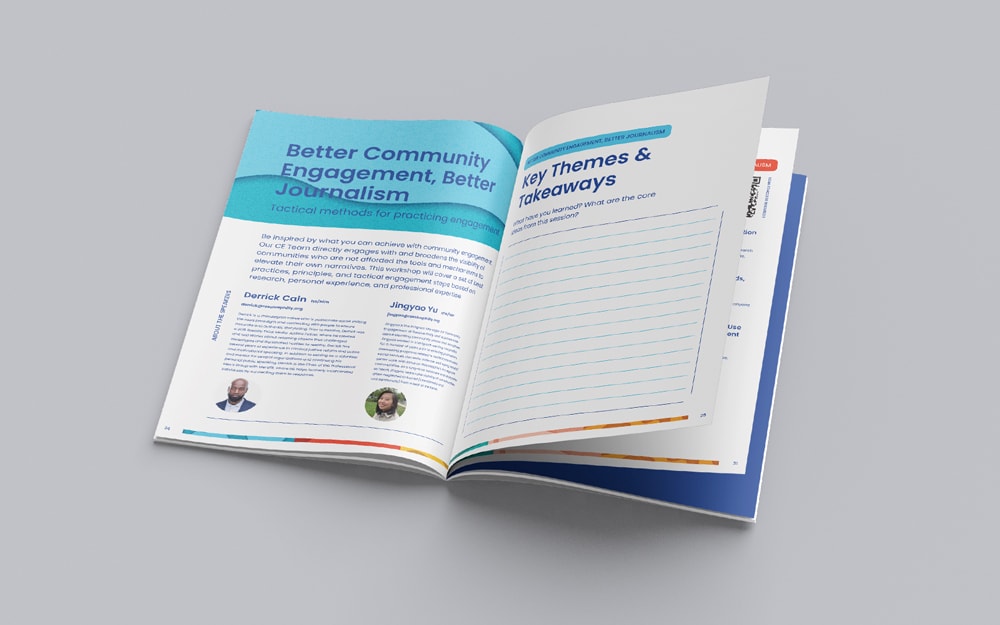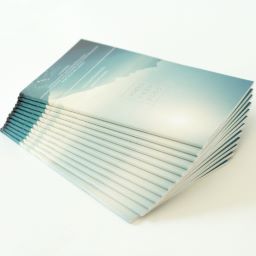Exploring Creative Layouts in Professional Booklet Printing
Exploring Creative Layouts in Professional Booklet Printing
Blog Article
The Vital Guide to Comprehending Brochure Printing Options and Techniques
The process of pamphlet printing entails multiple factors to consider that can substantially impact the final item. From selecting the ideal format and size to recognizing the nuances of binding techniques, each choice plays a vital role. Furthermore, factors such as paper stock and printing techniques additional influence the efficiency of the pamphlet. As one navigates these choices, it ends up being important to grasp just how they interconnect and what that indicates for the general outcome.
Understanding Booklet Layouts and Sizes
When thinking about pamphlet printing, recognizing the numerous styles and sizes offered is important for accomplishing the wanted presentation. Brochures can be created in countless layouts, including saddle-stitched, spiral-bound, and perfect-bound, each offering unique advantages. Common dimensions vary from conventional letter (8.5 x 11 inches) to smaller choices like A5 (5.8 x 8.3 inches), enabling adaptability based upon material and target audience.Selecting the appropriate dimension can affect both the layout and reader interaction. Larger dimensions may fit visually driven web content, while smaller sized layouts might be extra easy to use and mobile. In addition, the variety of web pages affects the option of binding approach, as thicker brochures may require stronger bindings. Inevitably, comprehending these elements enables a much more customized technique, making sure that the end product aligns with the designated message and aesthetic, enhancing the total efficiency of the interaction.
Choosing the Right Paper Supply

Binding Approaches: Options and Considerations
When it pertains to binding techniques for pamphlets, several choices are offered, each with distinctive benefits. Saddle stitch binding offers an affordable option for thinner brochures, while best binding methods give a more refined appearance for thicker magazines. Wire-O binding stands apart for its toughness and ease of usage, making it ideal for files that need versatility.
Saddle Stitch Binding
Saddle stitch binding uses a practical and cost-effective option for constructing brochures, making it a preferred selection amongst services and publishers. This binding technique involves folding sheets of paper in half and stapling them along the fold line, creating a well organized and cool look. Normally ideal for brochures with a lower page matter, saddle stitching is optimal for magazines, pamphlets, and instructional materials. The simpleness of this strategy enables quick production and is frequently favored for short runs or advertising things. It is essential to keep in mind that saddle stitch binding may not be appropriate for thicker booklets, as the back might not hold up under enhanced weight. Overall, it continues to be a dependable option for several printing jobs.
Perfect Binding Strategies
Perfect binding is a commonly utilized strategy that provides a sleek and specialist coating to publications and pamphlets. This method involves gluing the web pages with each other at the spine making use of a strong adhesive, enabling a tidy side and the ability to hold a bigger variety of pages contrasted to saddle stitching. Perfect binding is specifically suitable for thicker pamphlets, such as magazines and yearly reports, where a durable, flat back is desired. Additionally, it supplies the choice for a published cover that can be designed to improve aesthetic allure. Nevertheless, factors to consider such as page count, paper weight, and the planned use the booklet need to be taken into consideration, as they can impact resilience and general top quality.
Wire-O Binding Alternatives
Wire-O binding, recognized for its sturdiness and adaptability, supplies an excellent choice for brochures that require simple web page transforming and a specialist look. This binding approach uses a series of steel loopholes that hold web pages firmly, allowing them to lie level when open. It is particularly suitable for presentations, manuals, and magazines due to its robust nature. Wire-O binding is available in numerous shades and sizes, suiting various page counts and densities. In addition, it allows the addition of covers and tabs, enhancing the booklet's total visual. Factors to consider for Wire-O binding consist of the choice of wire shade, the browse around this site dimension of the loopholes, and the level of modification wanted, all of which can profoundly affect the end product's look and capability.
Digital vs. Offset Printing: Which Is Best for You?
When picking a printing technique for pamphlets, recognizing the distinctions between electronic and balance out printing is vital. Digital printing utilizes contemporary technology to generate premium prints rapidly and cost effectively, making it suitable for brief runs or jobs requiring fast turnaround times. It enables personalization, supplying the ability to publish on-demand with minimal waste.In comparison, offset printing is a typical method that masters producing big quantities with constant quality. It involves moving ink from a plate to a rubber covering, then to the paper, which causes dynamic shades and specific details. Balance out printing normally calls for longer configuration times and is a lot more economical for bigger volumes.Ultimately, the option in between digital and offset printing depends on task requirements, budget plan, and wanted quantity. For little, time-sensitive projects, electronic could be the very best option, while offset may be preferable for bigger, top quality manufacturings.

Creating Your Pamphlet: Tips and Best Practices
When developing a brochure, cautious interest to design, typeface option, and shade use can significantly improve its performance. A well-structured format overviews the reader's eye, while appropriate typefaces guarantee readability and convey the preferred tone. In addition, effective usage of shade can evoke emotions and emphasize crucial info, making the total style much more impactful.
Choosing the Right Design
Exactly how can one efficiently pick the right layout for a pamphlet? It is crucial to review the brochure's objective and target audience. A tidy, organized format boosts readability and engagement. Making use of a grid system can help in straightening elements constantly, developing a professional look. Additionally, including visual power structure with varying sizes and placements of photos and message can guide the viewers's eye and emphasize vital details. It is additionally important to leave sufficient white space, which avoids congestion and permits for far better emphasis. Evaluating various formats with mock-ups can provide insight right into exactly how the style carries out in real-world situations, making certain that the last item satisfies both practical and aesthetic demands.
Picking Appropriate Font Styles
An appropriate typeface can substantially enhance the total design of a pamphlet, complementing the format and enhancing the web content's message. The option of font styles ought to take into consideration readability, especially for body text, as it assures the details comes to all viewers. Sans-serif font styles are commonly preferred for digital styles, while serif fonts can offer a conventional feeling in printed products. It's a good idea to limit font choices to two or 3 to maintain visual coherence. Furthermore, typeface dimension plays a crucial role; headings need to be unique yet not overwhelming, while body message should be comfy for analysis. When selecting font styles, positioning with the pamphlet's style and target audience is necessary for reliable communication and aesthetic charm.
Efficient Use Shade
Color acts as an effective tool in booklet style, shaping assumptions and guiding reader emotions. It can stimulate sensations of peace, excitement, or depend on, depending on the colors selected. Developers must consider shade concept principles, guaranteeing that the chosen scheme aligns with the booklet's message and target audience. For circumstances, making use of warm colors like red and orange can develop seriousness, while cooler tones like blue and environment-friendly foster tranquility.Additionally, comparison plays an important role; corresponding shades can boost readability and visual appeal. Uniformity in shade use across pages additionally reinforces brand name identification and communication. Inevitably, efficient shade execution not only catches focus however likewise reinforces the pamphlet's objective, making it a crucial facet of effective layout.
Finishing Touches: Coatings and Unique Effects
While several consider the content and layout of a booklet the most essential elements, the completing touches, such as finishings and unique impacts, play a vital duty in boosting its overall appeal. Coatings can give protection and toughness, ensuring that the booklet withstands deterioration. Matte surfaces provide an innovative, non-reflective surface, while shiny coverings can make colors appear more vibrant and distinctive. Unique impacts, like embossing or foil stamping, add a tactile measurement that can develop a memorable impression. These techniques can highlight particular areas, drawing interest to vital information or creating visual interest. Additionally, UV covering can offer a high-shine finish that boosts the general look.Together, these completing touches not only improve the pamphlet's aesthetic but also connect professionalism and reliability and attention to information, eventually leaving a lasting effect on the viewers.
Expense Factors To Consider for Pamphlet Printing
Comprehending the different cost considerations for brochure printing is vital for organizations and companies aiming to optimize their spending plans. Trick factors influencing costs include the option of paper, ink, and binding methods. Higher quality products, such as superior paper or specialized inks, typically raise the overall expenditure. In addition, the size and web page count of the brochure play a significant function; larger booklets need more sources and time to produce.Another important consideration is the printing method, whether digital or offset, as each has its own prices framework and suitability for different amounts. Companies should also consider style costs, which can differ based upon complexity and using specialist solutions. Ultimately, delivery and handling costs can contribute to the overall, specifically for large visit this site orders. By assessing these aspects, companies can make enlightened decisions that align with their monetary capabilities while accomplishing the wanted quality in their printed products.
Often Asked Concerns
What Are the Environmental Effects of Pamphlet Printing?
The ecological impacts of booklet printing consist of logging from paper production, carbon emissions from transportation, and waste generation from discarded materials - Booklet Printing. Lasting methods, such as using recycled paper and eco-friendly inks, can reduce these impacts
Just How Can I Make Certain Color Precision in My Brochure?
To guarantee color accuracy in a pamphlet, one should use adjusted screens, employ professional color accounts, carry out test prints, and select top quality printing services that offer color matching and proofing alternatives for finest outcomes.
What Is the Regular Turn-around Time for Brochure Printing?
The regular turn-around time for booklet printing varies relying on the intricacy and quantity - Booklet Printing. Generally, it ranges from a few days to 2 weeks, affected by elements such as publishing approaches and finishing needs
Exist Minimum Order Quantities for Booklet Printing?

Can I Print Brochures in Numerous Languages?
Printing brochures in several languages is feasible. Several printing services provide choices for multilingual or multilingual formats, enabling efficient communication. Careful planning assurances that develop aspects fit numerous languages without endangering readability or visual appeals. Additionally, elements such as paper stock and printing methods additional influence the effectiveness of the booklet. When thinking about booklet printing, understanding the various formats and sizes available is This Site important for achieving the desired presentation. When picking a printing approach for pamphlets, comprehending the differences between digital and counter printing is crucial. In addition, the size and page count of the pamphlet play a substantial function; larger booklets call for even more sources and time to produce.Another essential factor to consider is the printing strategy, whether digital or countered, as each has its very own prices structure and viability for various quantities. The ecological influences of brochure printing include logging from paper production, carbon emissions from transport, and waste generation from disposed of materials.
Report this page